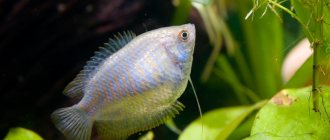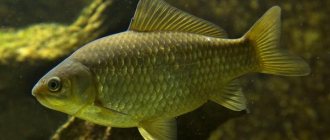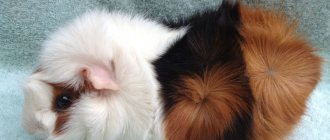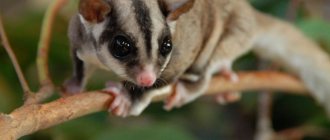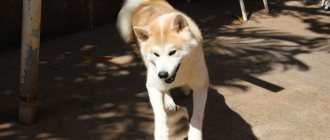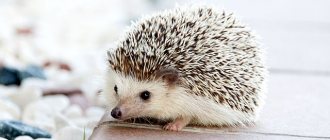Conditions of detention
Parrots are very hardy and unpretentious fish. Growing quite large, parrots need large (from 200 liters) aquariums. The peculiarity of this fish is its love of digging. For this reason, the pebbles should not be too large so as not to get stuck in the fish’s mouth. Despite their serious appearance, parrots can be quite timid and will hide if there is little cover or decoration in the aquarium. All decorative items in water must be securely fastened. Comfortable conditions for keeping parrots are fairly hard water (up to 20 dGH), an average temperature (+26 degrees) and an acidity pH of about 7. The water should be changed regularly and well aerated.
Parrot fish in a pseudo-marine aquarium
Description and habitats
The parrot is a fish that lives only in artificial reservoirs. Taiwan can be called its homeland, because it was there in 1964 that this variety was obtained as a result of targeted breeding work.
Taiwan
The method for obtaining this mutation is a trade secret and is kept in the strictest confidence. Not only the name of the rocks used to create it is unknown, but even their exact quantity is unknown. Presumably it was obtained by artificial triple crossing, so the word trihybrid is often added to the name of the parrot.
The aquarium parrot fish has a massive, laterally flattened body. The head is clearly separated from the body (a well-defined hump begins behind the head on the dorsal side). The mouth is disproportionately small, reminiscent of the beak of the bird of the same name, the lower lip is strongly curved. Sexual dimorphism appears only during spawning - the female develops an ovipositor, and the male develops a spermatic duct.
Depending on the body shape, the following types of parrots are distinguished:
- Heart. A fish reminiscent of the main symbol of Valentine's Day. In order to achieve such a resemblance, its tail fin is surgically removed.
- Unicorn. At the base of the head of such a fish there is a growth resembling a horn.
- King Kong. A large massive fish with a fatty growth in the forehead area.
- Red fortune. The fish is bright red in color with elongated fins and a large growth on the forehead. This variety is named after the god of luck and is especially valued in Feng Shui.
- Red ingot. A monochromatic fish with an almost disc-shaped body. This unusual shape is achieved due to severe deformation of the spine and swim bladder.
The size of an adult varies from 20 to 30 cm (depending on the conditions of detention).
The color of parrots is very diverse. There are standard color options, which are divided into solid (red, yellow, white or colorless) and spotted (marble, panda, diamond, pearl).
Unicorn fish
Attention! Black spots that appear in fish of the same color have nothing to do with color. They are a reaction to stress and disappear after the cause of their appearance is eliminated.
Over time, the natural color of parrots tends to fade, but it can be easily restored by adding food enriched with beta-carotene to the diet.
In addition, the color of the parrot can be artificial. There are fish:
- Chemically colored. The most common variation is the blue parrotfish; crimson, purple, and green varieties are also found.
- Tattooed. The pattern can be different - hearts, lines, symbols, hieroglyphs.
To obtain it, the fish is placed in an alkaline solution. It dissolves the integumentary mucus, which serves as protection against minor injuries and infections. After this, the painting process begins - the parrots are dipped into a dye or given subcutaneous injections of dye.
The final stage is the restoration of the protective cover by exposing the skin to irritating substances that provoke the production of mucus.
The introduction of chemical dyes has a negative effect on the immune system. Many of the fish that undergo this procedure die after a short time.
Reviews from parrot fish owners
In the photo there is a red parrot and a tattooed parrot
Nita, review of the red parrot
Smart, like the entire cichlid series. They are extremely curious, you put your hand into the water, the rest swim away, and you definitely need to see who you are doing there. And what faces they make. Yes, they dig periodically, but anyone who has kept a cichlid for a long time probably knows how to dig citrons, asters, brules, etc. and the like. These animals take off everything, huge boulders, snags, and the hybrids are so-so, scattered in heap after heap, and only if they try to spawn. Like all large fish, they litter a lot when they eat.
taviu, review of the red parrot
Smart, unpretentious handsome men. They dig the soil and love rearrangements. My favorites! They dig the soil, of course! But this process is so interesting to watch, because they are “cleaning the area where to spawn eggs!” They pick up pebbles in their mouths, swim away and spit them all out in one pile. And they move the plants (I only have artificial ones in my parrot tank), it’s so interesting, it’s like they’re rearranging the furniture! Very unpretentious! Beautiful, bright, if you feed them the right food! And the intelligence is higher than that of some HOMO SAPIENS. It is better to place a flock of seven or more individuals in a large aquarium, them, and only them! You’ll watch your “House 2” later, but it will be more interesting here.
Galina, review of the red parrot
Cute sociable fish, easy to tame. They hid for about a month, now they practically take food out of our hands. They love it when you talk to them and react to your voice. They don’t dig the soil, they just pick up food for the catfish from above. Sometimes they “butt” the bots, but they are harmless and do not bite. I am very surprised when I hear that parrots supposedly bite. Maybe they also have subspecies? I didn’t even find any teeth on mine. When doing something in aqua, they like to watch their hands, but out of curiosity and hoping to grab a lost piece of food, they don’t grab their fingers.
Compatibility with other fish
The red parrot is a peaceful fish that prefers the lower layers of water. One aquarium can contain from one to three pairs of adult parrots at the same time.
In addition to representatives of their species, parrots can get along with most large non-aggressive or moderately aggressive fish.
Shared content is possible with the following types:
- Barbs (Denisoni, Sumatran);
- medium and large catfish (tarakatum, Siamese algae eater, ancistrus);
- Congo;
- arowana (red, gold, black, silver);
- labeo;
- Apteronothus white-fronted;
- peaceful species of cichlases.
But parrots can perceive small fish (neons, guppies, gracilis) as an addition to the main diet. Therefore, it is better to refrain from being close to them. The same applies to angelfish, although if there is enough cover, peaceful coexistence is possible.
Kinds
The classification of parrot fish occurs primarily by the color of their body (the common color is bright red or poisonous orange). But they are also classified according to the shape and color of their fins: unicornblood, Kavalan Red Ingot, King Kong Parrot and One Finnage Red Parrot.
The parrot fish family has more than a hundred species, but only a few are the most common:
- The red parrot is an aquarium fish approximately 25 cm in length. Its color, in most cases, is red combined with yellow. Their distinctive feature is their beak - with sharp teeth that are visible from the outside. As the fish matures, it can change color several times. It is interesting to watch this fish at night: at night it creates a protective cover of its own mucus that envelops it, since it likes to fall asleep under protection.
- Scar is a small aquarium fish, it can grow up to 19 cm, and has more than 50 varieties. In nature, the fish lives in coral reefs, where it feeds on mollusks and corals.
- Green coneface - this fish can reach 100 cm, sometimes more. This fish weighs more than 40 kg. But fish have such parameters in nature, and in home habitats they are much smaller.
Features of character and lifestyle
Photo: Parrot fish
The fish's lifestyle is mostly solitary. He tries to stay in “his” area, not far from his shelter, so that in case of danger he can hide in his house. Such places are located near coral reef gorges and caves. And it does not leave its habitat, since all the main food is available on the reefs.
As soon as night falls, the parrot fish secretes mucus around itself from its mouth, which forms a special protective film. This protection prevents the smell emanating from the fish from spreading and being detected by predators that hunt at night using their sense of smell. This method also helps to heal wounds that appear in fish from reefs, since the mucus has an antiseptic effect.
The fish spends up to 4% of its total energy on this procedure throughout the day. Such protection does not allow other blood-sucking parasites, such as isopods, from groups of crustaceans, to approach. To circulate water in the cocoon, the fish leaves holes on both sides, allowing water to pass freely. At dawn, she chews through this film with her sharp teeth and goes in search of food.
An interesting feature is that one parrotfish can produce up to 90 kilograms of sand annually due to its unusual diet.” As mentioned above, stones and pieces of coral, when they get into food along with algae, come out of it in the form of crushed sand. Such delicate and fine sand can be found on the shores of seas where parrotfish live.
Diseases
Fish rarely get sick, only if environmental conditions are unfavorable, the water is dirty or the feeding regime is disrupted. The most common illnesses include the following:
- Oodinosis (formation of a yellow film on the body of cichlazoma). For treatment, consult a specialist.
- Obesity. For treatment, review the cichlids' diet and diet.
- Ichthyophthiriasis (white crusts on the body of the fish). For treatment, use copper preparations and change the aquarium water.
- Tuberculosis (the individual becomes lethargic and sinks to the bottom). Treatment with kanamycin is possible, however, it is better to consult a specialist.
Maintenance and care in the aquarium
Since parrot cichlids are unpretentious to water parameters, this is another reason why they have become so popular. They come from the mouth of the Ethiopian River and the Niger River Delta, where water parameters are very different.
In the Ethiopian River, the water is typical of rivers flowing through the jungle, highly acidic and very soft, dark from tannins released into the water by fallen leaves. And in the Niger Delta, the water is slightly brackish, more alkaline and with much higher hardness.
The easiest way to understand whether your water is suitable for maintenance is to ask the seller what parameters it lived in. As a rule, the fish you buy in your region are already well adapted.
If she came from another region, then adaptation may be needed. A sudden and abrupt change in water is too stressful for the fish.
It is important that the aquarium has many different shelters - pots, nuts, pipes, caves.
Especially if you plan to get fry from these fish. It is better to place such shelters in the corners, and if you keep more than one pair, you will soon see how they settle into their houses.
It is especially interesting to observe how each couple divides the aquarium into their own and someone else’s territory. Both males and females meet on the border of this territory and demonstrate their beauty and strength to the enemy. What is characteristic is that females oppose only females, and males oppose males.
The ground is just as important as cover. They love sand or fine gravel, which they dig up to their liking.
Yes, they may dig up some small bush, but in general they do not harm the plants.
In addition, the aquarium needs to be covered, since this is a rather fast fish and in a rush it may well jump out of the aquarium.
Suitable water parameters for keeping: hardness: 8-15° dH, Ph: 6.5 to 7.5, 24-27° C
Reproduction
Reproduction has some peculiarities. The instinct to reproduce offspring awakens when certain conditions are reached. For parrots, it is enough to raise the water temperature, and they will begin to build nests and begin to spawn. Red and purple parrots prefer to dig in the ground to lay their eggs.
During the spawning period, the fish become especially active. It happens that the female lays eggs, but the male does not fertilize her. Such eggs from the aquarium must be caught with a net and removed so as not to provoke contamination of the water.
Spawning ends with the emergence of fry from the eggs. Red parrots are difficult to notice - they have a gray-black color and are completely inconspicuous at first. After five months, the coloring pigment intensifies, its content increases, and the scales take on a pronounced orange-red hue.
Sex differences
The main question for beginning aquarists is how to distinguish a male from a female. Juveniles of different sexes are almost the same size, but over time it is easier to distinguish them - males become clearly larger than females.
Also key to determining sex is the caudal fin. In the male it is sharper, and in the female it is rounded.
The presence of males in the aquarium is not of particular importance for the breeding of these species, since male red parrots are sterile, and eggs are sometimes fertilized by other males of the cichlid genus, but the parrot phenotype predominates in the offspring.
Features of behavior
The fish themselves do not show aggression towards other species and get along well with them, but they are very sensitive to the fact that they themselves experience oppression. This is especially evident in mini parrots, which are easily oppressed in an aquarium due to their size. The fish get sick, become lethargic, swim less briskly and eat poorly, which can cause them to get sick and die. When adding other species to common parrots, carefully observe the joint behavior of the pets, taking into account compatibility with other inhabitants.
Compatibility with other fish
For a parrot, it is best to make a species aquarium and keep it with representatives of the same family. If you want to add another variety, select representatives that are somewhat larger than the parrots with which they can live. The parrot accidentally swallows and eats the babies, so you shouldn’t add neons and other “trifles” that can get into the parrot’s mouth, for example, a mini parrot that reaches only 2 cm in length. The orange parrot grows up to 5 cm.
Excellent neighbors will be:
- black-striped cichlazomas;
- lemon labidochromis;
- angelfish;
- catfish;
- iris.
Pelvicachromis pulchera breeding
To create a compatible pair, purchase 6 or more fry and allow them to become friends and mate naturally. They form monogamous pairs and reproduce.
Fish become sexually mature at the age of 9-12 months.
Requirements for the spawning tank
- Individuals prefer to spawn in slightly acidic water, so the pH range should be 6.5-7.0.
- The temperature should be 24-27°C.
- The aquarium must have soft filtration so that the fry are not sucked into the filter.
- Make sure there are potential spawning sites. The female likes to lay eggs in broken clay pots or something similar.
Breeding procedure
- When the pair is ready to breed, their colors will become more intense and the female's belly will darken and turn dark purple. The female initiates spawning by showing her dark purple belly to the male.
- The pair will then select a spawning site and dig a hole in the substrate. They are secretive, so they can disappear for several days.
- During spawning, the female lays 200 to 300 eggs on a flat surface, and the male fertilizes them. Next, they transfer the eggs to holes in the substrate. The female guards the eggs and fry, while the male defends the territory.
- The eggs will hatch in 2-3 days, and the fry will be free-swimming in 7-8 days.
- Once the eggs hatch, both parents will protect the fry. They tend them for about a month and then can start breeding again.
- Feed the babies small shrimp, artemiilius nauplii (a type of crustacean), and nematodes. The fry will also eat algae and detritus (organic remains) found in the aquarium.
